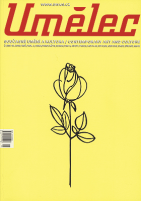|
Following an exhibition of objects by Siobhan Hapaska, Charles Long and Ernesto Neto, at the Stockholm-based gallery Magasin 3, is presenting an exhibition combining works by contemporary photographers Annika von Hausswolff, and Jane and Louise Wilson with a extensive collection of documentary photographs by Usher Fellig, who better known as Weegee (1899-1968). His Manhattan crime shots from the 1930s and 1940s are interpreted as a virtual source of inspiration for contemporary artists assembling pictures to appear like documentary photos. Annika von Hausswolff’s latest series shows the empty spaces of an anonymous, abandoned building whose history is told through accidental peculiarities such as a knocked-over flower pot and a chair jammed in the door. The ambivalence between documentary and arranged photographs is further highlighted by an installation in which individual images are surrounded by the normally hidden gallery facilities. Similar empty spaces make up the setting for her photographs of bodies, which she presented at last year’s Venice Biennial. Jane and Louis Wilson set their photographs in environments with precise points of reference such as the House of Lords and Las Vegas casinos. A casino is also the site for their video footage shown at the exhibition. The two seemingly contradicting spaces—a symbol of democratic tradition and. a symbol of consumer entertainment—show surprising similarities on the precisely composed images. The similarities however do not only include the surveillance cameras monitoring visitors at both sites. Additional parallels are the floral ornaments on both the carpets in casinos and on the wallpaper in the House of Lords; the chairs casino visitors sit in while they have their shoes polished correspond to those occupied by members of the House of Lords. As if one was but a reflection of the other.


Artículos recomendados

|
|
Borrowing heavily from fairy tales, fables and science fiction, the art of Magda Tóthová revolves around modern utopias and social models and their failures. Her works address personal and social issues, both the private and the political. The stylistic device of personification is central to the social criticism emblematic of her work and to the negotiation of concepts used to construct norms.…
|

|
|
Contents of the new issue.
|

|
|
We’re constantly hearing that someone would like to do some joint project, organize something together, some event, but… damn, how to put it... we really like what you’re doing but it might piss someone off back home. Sure, it’s true that every now and then someone gets kicked out of this institution or that institute for organizing something with Divus, but weren’t they actually terribly self…
|

|
|
Goff & Rosenthal gallery, Berlin, November 18 - December 30, 2006
Society permanently renegotiates the definition of drugs and our relationship towards them. In his forty-five minute found-footage film The Conquest of Happiness, produced in 2005, Oliver Pietsch, a Berlin-based video artist, demonstrates which drugs society can accommodate, which it cannot, and how the story of the drugs can be…
|
|








Comentarios
Actualmente no hay comentariosAgregar nuevo comentario